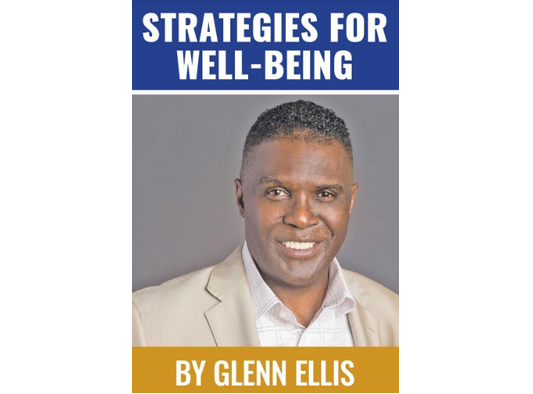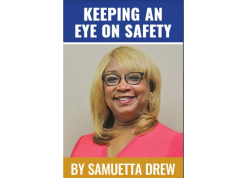By Glenn Ellis
“What kind of face mask should I wear to protect myself from getting COVID-19?”
There is no longer a debate on whether face masks offer us protection from the COVID-19 virus (by sensible people, anyway). The World Health Organization, the Centers for Disease Control and Prevention (CDC), and the National Institute for Health (NIH) are all in agreement, and the global data on the transmission and resurgent spikes in infection rates after “re-openings” all bear the stark reality of our collective foreseeable future: wear face masks.
There’s nothing to be gained by questioning whether it makes a difference. The science is sound, and the research is indisputable. If 95 percent of people wear cloth masks when within 6 feet of other people in public, it will reduce COVID-19 transmission by at least 30 percent. So, if every infected person transmits the virus to 30 percent fewer people, it improves the chances of surviving the continual spread of COVID-19.
When it comes to choosing a face mask, The Journal of Science Advances found that the best protection from the COVID-19 virus is a fitted N95 or three-layer surgical mask. Let’s look at what it is about these two.
All things considered equal, hands down, the fitted N95 mask is better, compared to surgical masks. A 2013 study in the Journal of Aerosol Science and Technology found surgical masks can filter about 60 percent of smaller, inhaled particles; an N95 would filter 95 percent.
Some N95 masks have valves that make them easier to breathe through. With this type of mask, unfiltered air is released when the wearer exhales. Have you seen people walking around with those face masks with those “valves” to breathe out? Those masks make it easier to breathe out but, you’re also exhaling your germs into the air around you. Even though they do a good job protecting the wearer, but because of the one-way valves, they don’t offer much protection to the people around the wearer. If the wearer is contagious, either knowingly or unknowingly, they could still be spreading the virus to others. Since the main reason to wear a mask is to protect others, a simpler mask with a filter may be a better choice.
The N95 will give you better filter penetration as a result of the face-seal leaking when you inhale or exhale, when tested in the laboratory. But we live in the real world, not a laboratory. This virus’ transmission is sinister and tricky.
A “fitted” N95 face mask is only as good as it is used under ideal circumstances and worn in the proper manner. It is because the face seal is important for protection, and fit testing is important for efficiency; they are generally recommended to be made available for health care, frontline, and other essential workers. Their workplaces typically will have in the place systems and procedures to ensure that N95 masks are used properly to protect from infection.
Although those blue, disposable masks are not close fitting, like an N95, they are fluid resistant and do provide you with some protection against the larger respiratory droplets from coughs and sneezes. The most effective protection that these disposable masks provide is that they will prevent you from spreading infectious droplets to others. Reminder…they are “disposable.” One-time use is it. Anything else, and you’re doing yourself more harm than good.
Some folks are getting very creative…and practical. They are making face masks out of socks, and towels, and whatever. They have limited effectiveness. A face mask made out of a towel?
We are going to be wearing them for a long, long time. We might as well start looking for ways to make the reality as comfortable as possible, while being as safe as possible.
Johns Hopkins offers some very good advice on face masks. They say that you should look for face masks with at least two layers of fabric. The mask should cover your nose and mouth without large gaps, or lots of movement and slipping. Try to get a face mask that has adjustable ear loops. If you’re like me, and wear glasses, Johns Hopkins suggests a mask with a bendable border at the top. They type allow you to mold the face mask to fit the bridge of your nose and prevent your glasses from fogging. Professional masks should be reserved for health care workers on the front lines caring for patients.
Now, with all of that said, back in 2016, Canadian researchers published study results that concluded “our meta-analysis showed that there were insufficient data to determine definitively whether N95 respirators are superior to surgical masks in protecting health care workers against transmissible acute respiratory infections in clinical settings”.
To sum up face masks, here is the “takeaway”. No face mask of any kind is a silver bullet. Even an N95 won’t save you if you touch your face with contaminated hands right after you take it off. Face masks must be used in combination with physical distancing, hand hygiene, and other protective measures.
One last thing … Don’t forget, you can reduce your own chances of catching the virus by wearing one yourself, even if nobody else around you is …
Glenn Ellis, MPH is a Visiting Scholar at The National Bioethics Center at Tuskegee University and a Harvard Medical School Research Bioethics Fellow. Ellis is an active media contributor on Health Equity and Medical Ethics. For more good health information visit: www.glennellis.com.




